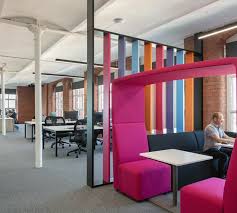A thriving organization depends not only on innovative ideas and talented personnel but also on the environment in which employees operate daily. Creating a healthy and productive work environment is essential for fostering employee well-being, boosting productivity, and cultivating a positive workplace culture. Central to this objective is the implementation of effective office ergonomics—designing workspaces that minimize physical and mental strain, ultimately leading to happier, healthier, and more engaged staff.
One of the most impactful strategies for promoting ergonomic principles is providing adjustable furniture. Ergonomic chairs that can be customized to an employee’s body type are crucial in maintaining proper posture, thereby reducing the risk of musculoskeletal issues such as back pain and neck strain. Similarly, adjustable desks, including sit-stand options, enable employees to alternate between sitting and standing throughout the day. This variation promotes better circulation, reduces fatigue, and helps prevent long-term health problems. Proper monitor placement—at eye level—prevents neck strain and eye discomfort, while ergonomically positioned keyboards and mice help reduce wrist tension. These small adjustments, though seemingly minor, collectively contribute to significant improvements in comfort and health.
Encouraging regular movement and stretching is another vital aspect of ergonomic workplace design. Sitting for extended periods can lead to stiffness, decreased focus, and overall discomfort. Providing designated stretching areas or promoting brief movement breaks helps alleviate muscle tension, increase alertness, and foster a more dynamic work environment. Features such as sit-stand desks or ergonomic accessories like footrests and monitor arms support movement and physical well-being, making the workspace more adaptable and health-conscious.
Beyond individual workstations, the overall office environment plays a critical role in employee mental health and productivity. Natural light has been shown to boost mood and energy levels, contributing to a more positive atmosphere. Good air quality enhances concentration and reduces fatigue, while thoughtfully chosen colors and calming decor can create a relaxing ambiance that mitigates stress. When these elements are integrated into the office design, employees are more likely to feel comfortable, motivated, and satisfied with their work environment—factors that directly influence performance.
For startups and small businesses with limited budgets, creating an ergonomic and inviting office space requires strategic planning. Starting small with multi-purpose furniture—such as desks with built-in storage or modular seating—maximizes functionality without overspending. Open-plan layouts are cost-effective, fostering collaboration and communication while keeping construction costs low. Simple yet effective enhancements like adding plants, artwork, and appropriate lighting fixtures can dramatically improve the aesthetic appeal and comfort of the workspace. Leasing furniture or purchasing second-hand items in good condition are budget-friendly options that allow organizations to allocate resources toward essential areas like quiet zones and meeting rooms.
Selecting the right office furniture is vital for effective space planning and employee comfort. Ergonomic chairs and adjustable desks should be prioritized, especially for roles involving long hours at a desk. Modular furniture offers flexibility, allowing spaces to be reconfigured as team needs evolve, reducing future expenses. When choosing furnishings, durability and a professional appearance are important considerations. Adequate storage solutions help keep workspaces tidy, preventing clutter that can impede movement and productivity. Precise measurements of pathways and furniture dimensions ensure the layout promotes easy navigation and avoids overcrowding.
Acoustic management is often overlooked but is essential, particularly in open-plan offices. Excessive noise from conversations, phones, or office equipment can lead to distractions, increased stress, and reduced focus. Incorporating sound-absorbing materials such as acoustic panels, ceiling tiles, and carpets can significantly diminish echo and unwanted noise. Creating quiet zones with partitions or enclosed rooms provides employees with spaces for focused work and confidential discussions—improving overall workflow and comfort.
In summary, optimizing office space through ergonomic design, strategic furniture selection, and acoustic control enhances employee well-being and productivity. Office Insight specializes in transforming workplaces into efficient, sustainable, and inspiring environments.

